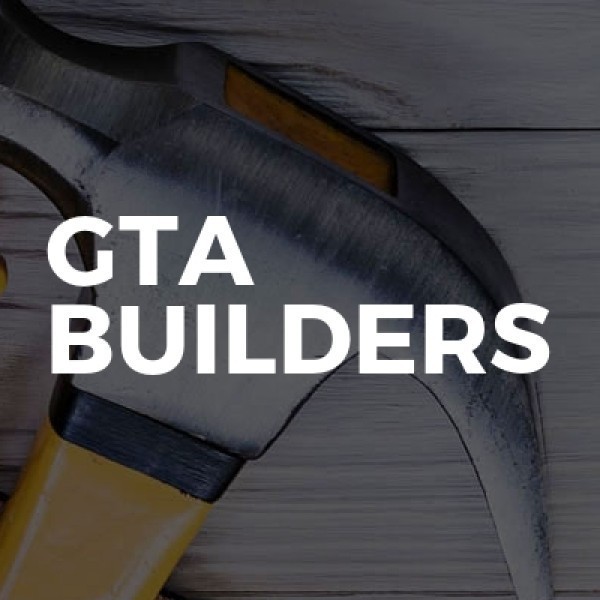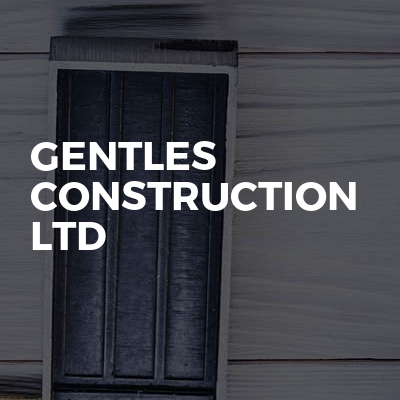Loft Conversions in Cardiff/Caerdydd
Welcome to Look Fresh Building, Painting and Cleaning Services, your trusted partner for all your building and renovation needs in Penyrh... read more »
Welcome to Forty Builders Ltd, your trusted partner for superior construction services in Cyncoed and the wider Cardiff area. As speciali... read more »
Welcome to GTA Builders, your trusted partner in transforming spaces across Caerphilly. Nestled in the heart of Ystrad Mynach, we bring o... read more »
Welcome to Right Choice Construction, your go-to experts for all building and renovation needs in Hollybush and across Torfaen. As a fami... read more »
Gentles Construction Ltd: Your Premier Construction Partner in Michaelston-y-Fedw and Newport
Welcome to Gentles... read more »
TW Carpentry: Expert Carpenters in Barry Dock and The Vale of Glamorgan
Welcome to TW Carpentry, your trusted pa... read more »
Welcome to Wow Builder, your trusted partner for all building and construction needs in the bustling city of Cardiff. Nestled in the deli... read more »
Welcome to Cardiffstone Construction Ltd, your premier choice for builders and renovation experts in Glan-y-llyn and the wider Rhondda Cy... read more »
Welcome to Falco Building Solutions Ltd, your premier choice for builders in Pontyclun, offering a comprehensive range of service... read more »
MD Construction is a reputable build... read more »
Welcome to Carpentry And Building Maintenance, your t... read more »
MPJ Construction is a reputable cons... read more »
Welcome to PipRin Design, your trusted partner for al... read more »
Welcome to Beaver Woodworks Construction, your go-to... read more »
Welcome to Rob's Carpentry, your trusted partner for... read more »
Welcome to Cynon Joinery, your trusted partner for al... read more »
Welcome to Wggtfhif, your trusted partner for all you... read more »
Impressions Builders Cardiff is your... read more »
Welcome to Feltfab, your go-to solution for all your... read more »
Understanding Loft Conversions in Cardiff/Caerdydd
Loft conversions in Cardiff/Caerdydd are becoming increasingly popular as homeowners seek to maximise their living space without the hassle of moving. This transformation not only adds value to your property but also provides a versatile space that can be tailored to your needs. Whether you're looking to create an extra bedroom, a home office, or a playroom, a loft conversion can be the perfect solution.
The Benefits of Loft Conversions
Loft conversions offer numerous benefits, making them an attractive option for many homeowners. Firstly, they can significantly increase the value of your home, often by more than the cost of the conversion itself. Additionally, they provide extra living space without sacrificing garden area, which is particularly beneficial in urban areas like Cardiff/Caerdydd where outdoor space is limited.
Increased Property Value
One of the most compelling reasons to consider a loft conversion is the potential increase in property value. On average, a well-executed loft conversion can add up to 20% to the value of your home. This makes it a smart investment, especially in a competitive housing market.
Additional Living Space
Loft conversions provide a practical solution for families needing more space. Whether it's an additional bedroom, a playroom for the kids, or a quiet home office, the possibilities are endless. This extra space can greatly enhance your quality of life without the need for a costly and disruptive move.
Customisable Design
Another advantage of loft conversions is the ability to customise the space to suit your needs. From skylights to en-suite bathrooms, the design can be tailored to your preferences, ensuring the new space is both functional and aesthetically pleasing.
Types of Loft Conversions
There are several types of loft conversions, each with its own set of advantages and considerations. The most common types include dormer, hip-to-gable, and mansard conversions. Understanding the differences can help you choose the best option for your home.
Dormer Loft Conversions
Dormer conversions are the most popular type, as they provide additional headroom and floor space. This involves extending the existing roof to create a box-like structure, which can be finished with a flat or pitched roof. Dormer conversions are suitable for most types of houses and offer a good balance between cost and added space.
Hip-to-Gable Loft Conversions
Hip-to-gable conversions are ideal for semi-detached or detached homes with a hipped roof. This type of conversion involves extending the sloping side of the roof to create a vertical wall, effectively increasing the internal space. Hip-to-gable conversions can be combined with dormer conversions for even more space.
Mansard Loft Conversions
Mansard conversions are the most extensive and typically involve altering the entire roof structure. This type of conversion creates a flat roof with steeply sloping sides, maximising the available space. While mansard conversions are more expensive, they offer the most significant increase in living area.
Planning Permission and Building Regulations
Before embarking on a loft conversion in Cardiff/Caerdydd, it's essential to understand the planning permission and building regulations that may apply. While many loft conversions fall under permitted development rights, some may require planning permission, particularly if your property is in a conservation area or is a listed building.
Permitted Development Rights
Most loft conversions are covered by permitted development rights, meaning you won't need planning permission as long as the conversion meets specific criteria. These include not extending the roof beyond the highest part of the existing roof and not exceeding a certain volume increase.
When Planning Permission is Required
Planning permission may be necessary if your conversion involves significant changes to the roof structure or if your property is in a designated area. It's always advisable to check with your local planning authority to ensure compliance with all regulations.
Building Regulations
Regardless of whether planning permission is needed, all loft conversions must comply with building regulations. These regulations ensure the safety and structural integrity of the conversion, covering aspects such as fire safety, insulation, and access. Hiring a qualified architect or builder can help ensure your conversion meets all necessary standards.
Choosing the Right Contractor
Selecting the right contractor is crucial to the success of your loft conversion. A reputable contractor will guide you through the process, from initial design to final completion, ensuring a smooth and stress-free experience.
Research and Recommendations
Start by researching local contractors with experience in loft conversions. Ask for recommendations from friends or family, and read online reviews to gauge the quality of their work. It's important to choose a contractor with a proven track record and positive customer feedback.
Obtaining Quotes
Once you've shortlisted potential contractors, obtain detailed quotes from each. This should include a breakdown of costs, timelines, and any potential additional expenses. Comparing quotes will help you make an informed decision and avoid any unexpected surprises.
Checking Credentials
Ensure your chosen contractor is fully qualified and insured. Check for membership in professional organisations, such as the Federation of Master Builders, which can provide additional peace of mind. A reputable contractor will also be happy to provide references from previous clients.
Design Considerations for Your Loft Conversion
Designing your loft conversion is an exciting part of the process, allowing you to create a space that reflects your personal style and meets your needs. From layout to lighting, there are several factors to consider when planning your conversion.
Maximising Space
To make the most of your loft conversion, consider clever design solutions that maximise space. Built-in storage, such as under-eaves cupboards, can help keep the area clutter-free, while open-plan layouts can create a sense of spaciousness.
Lighting and Ventilation
Natural light is essential in any living space, and loft conversions are no exception. Skylights and dormer windows can flood the area with light, creating a bright and welcoming environment. Adequate ventilation is also crucial, so consider installing windows that can be opened to allow fresh air to circulate.
Choosing the Right Materials
The materials you choose for your loft conversion can have a significant impact on the overall look and feel of the space. Opt for high-quality materials that complement the existing style of your home, ensuring a seamless transition between old and new.
Cost Considerations for Loft Conversions
The cost of a loft conversion can vary significantly depending on the type of conversion, the size of the space, and the materials used. It's important to set a realistic budget and factor in any additional expenses that may arise during the project.
Budgeting for Your Conversion
Start by obtaining detailed quotes from contractors and setting a budget that includes a contingency fund for unexpected costs. Consider the potential return on investment, as a well-executed loft conversion can add significant value to your home.
Financing Options
If you're unable to fund the conversion upfront, there are several financing options available. Home improvement loans, remortgaging, or using savings are all viable options. It's important to choose a financing method that suits your financial situation and won't put undue strain on your finances.
Cost-Saving Tips
To keep costs down, consider completing some of the work yourself, such as painting or decorating. Additionally, sourcing materials directly from suppliers can often be more cost-effective than purchasing through a contractor.
Common Challenges and Solutions
While loft conversions offer numerous benefits, they can also present certain challenges. Being aware of these potential issues and having solutions in place can help ensure a successful conversion.
Structural Challenges
One of the most common challenges is ensuring the existing structure can support the additional weight of the conversion. A structural engineer can assess the integrity of your home and recommend any necessary reinforcements.
Access and Staircase Design
Creating access to the new loft space can be tricky, particularly in homes with limited space. A well-designed staircase is essential, and options such as spiral staircases or space-saving designs can help overcome this challenge.
Dealing with Planning Restrictions
If your property is subject to planning restrictions, it may be necessary to adapt your plans to comply with regulations. Working with an experienced architect can help navigate these challenges and ensure your conversion meets all necessary requirements.
Frequently Asked Questions
- Do I need planning permission for a loft conversion in Cardiff/Caerdydd? Most loft conversions fall under permitted development rights, but it's always best to check with your local planning authority.
- How long does a loft conversion take? The duration can vary, but most conversions take between 6 to 12 weeks to complete.
- Will a loft conversion add value to my home? Yes, a well-executed loft conversion can add up to 20% to the value of your property.
- Can all lofts be converted? While most lofts can be converted, some may require additional structural work to make them suitable.
- What is the cost of a loft conversion? Costs can vary, but on average, a loft conversion in Cardiff/Caerdydd can range from £20,000 to £50,000.
- How can I ensure my loft conversion meets building regulations? Hiring a qualified architect or builder will help ensure your conversion complies with all necessary regulations.
In conclusion, loft conversions in Cardiff/Caerdydd offer a fantastic opportunity to enhance your home, providing additional space and increasing property value. By understanding the different types of conversions, planning regulations, and design considerations, you can create a beautiful and functional space that meets your needs. With careful planning and the right contractor, your loft conversion can be a rewarding and successful project.
Send a message














